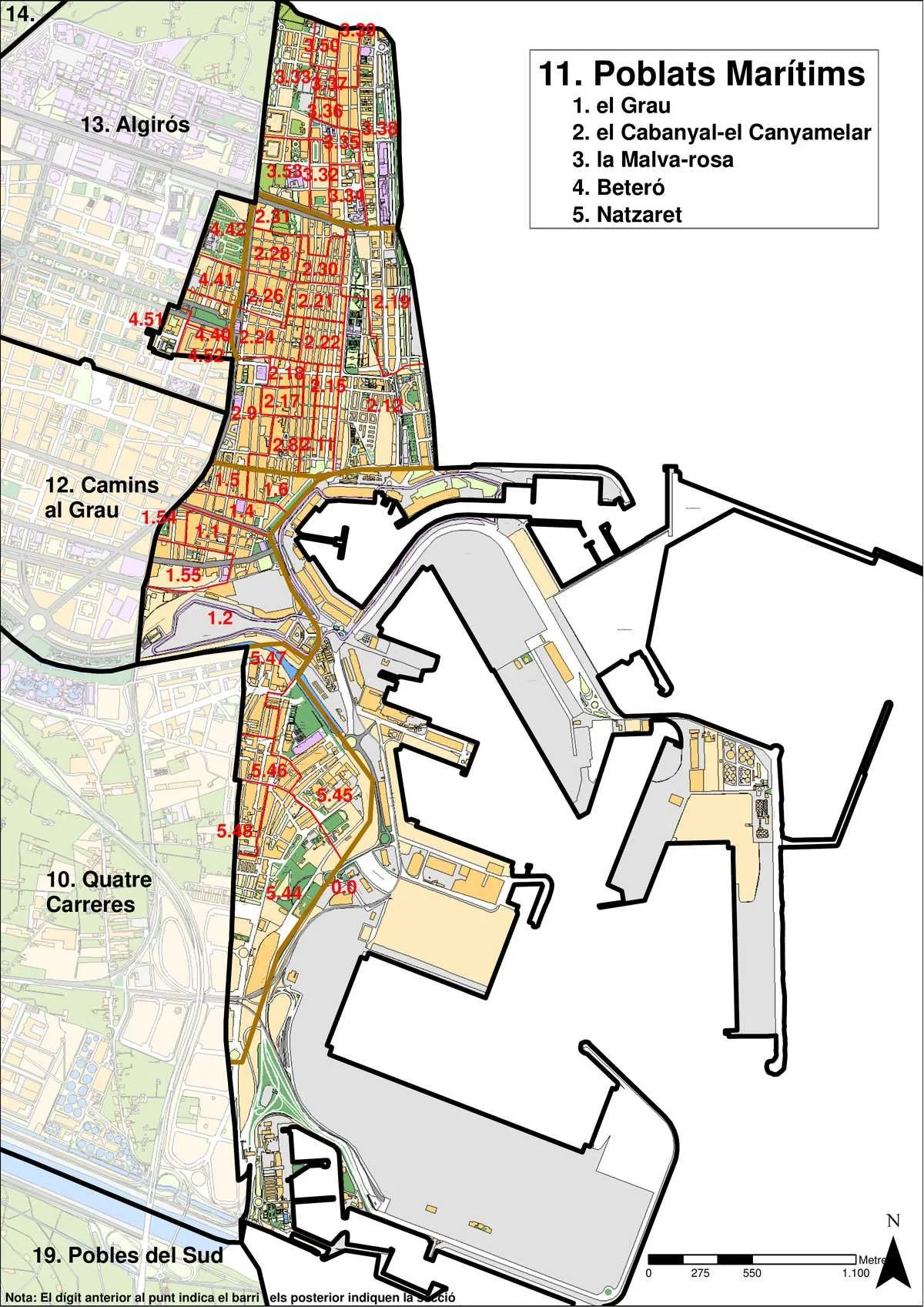Neighborhood Spotlight — El Grau
El Grau is Valencia’s historic port‑side barrio—salt‑air mornings, wide promenades, and a front‑row seat to the city’s maritime heart. For expats, it blends working‑harbor grit with seaside living, offering fast access to beaches, the marina, and the Turia park spine without giving up everyday conveniences.
Quick Facts & Maps
Parent District: Poblats Marítims
Vibe: Maritime, authentic, evolving
Transit: Excellent bus and tram links; bike lanes to beach/center; quick ring‑road access
Green Space: Minutes to the beach promenades and the Turia Gardens via bike
Housing: Mix of early‑20th‑century blocks, modest walk‑ups, refurbished flats, and newer builds near the marina
Good For: Sea lovers, runners/cyclists, foodies, value‑seekers who want the coast
Noise Level: Moderate—livelier around the port and during events, quieter on interior streets
Walkability: Strong—grocers, cafés, markets, and tram stops within a short loop
Overview
El Grau sits where Valencia meets the Mediterranean. Expect early‑morning joggers along the docks, fishermen chatting by the water, and a steady flow of cyclists heading to Malvarrosa Beach. The urban fabric is honest and practical—no pretense, lots of life. Newer residential pockets near the marina add elevators, parking, and terraces; traditional blocks offer value and character, especially on streets a step back from the main avenues.
For expats, the appeal is clear: coastal lifestyle without the tourist markup of front‑row beachfront. You’re minutes to the sand and a short ride to El Cabanyal’s colorful streets and restaurants. Weekly routines feel easy—grocer, bakery, gym, tram stop—plus sunsets over the marina that never get old.
A Deep Dive into History
Long before Valencia’s futuristic skyline rose, El Grau was the city’s commercial gateway. The old port linked Valencia’s silk, ceramics, and citrus to the Mediterranean trade routes. Through the 19th and 20th centuries, shipyards and warehouses reshaped the shoreline and seeded a proud working‑class culture. Many families trace roots back generations, and maritime guilds still anchor local identity.
Recent decades brought major change: America’s Cup races, marina upgrades, and new promenades re‑opened the waterfront to residents. While the working port remains active, the area has diversified—residential refurbishments, restaurants, and culture spaces alongside industry. The result is a lived‑in, evolving neighborhood that balances heritage with a new coastal lifestyle.
Why Expats Love El Grau
Three big reasons: proximity to the sea, value, and authenticity. You get the breeze, the promenades, and direct bike routes to the beach—often at lower prices than Malvarrosa or Cabanyal’s most coveted blocks. The neighborhood feels real: morning deliveries, neighbors who know each other, and terraces that fill with locals at sunset.
Housing & Lifestyle
Housing runs from modest walk‑ups with balconies to contemporary builds near the marina. Refurbished flats commonly add double glazing, efficient AC, and open kitchens; newer residences introduce elevators, parking, and shared amenities. Many homes have cross‑breeze and good light—ask for southeast exposure for bright mornings or west‑facing terraces for golden hours.Lifestyle revolves around the water. Runners trace the harbor edge, cyclists roll to the beach, and weekends shift between seafood lunches and long seaside walks. Day‑to‑day errands are compact: fruiterias, bakeries, pharmacies, and small supermarkets dot the grid, with larger shopping a quick tram or car ride away.
Getting Around
Connectivity is a highlight. Trams and buses plug El Grau into the network, with protected bike lanes stitching the coast to the city center and the Turia Gardens. The marina area is scooter‑friendly, and drivers have quick access to ring roads for airport or regional escapes. Many expats go car‑optional thanks to the tram and bike links.
Food & Culture
Seafood leads, naturally—grilled fish, rice dishes, and tapas terraces with a salty breeze. Cafés and modern bistros cluster near the marina and along corridors toward Cabanyal. Cultural life blends grassroots and nautical: small galleries, sailing clubs, outdoor concerts, and seasonal markets. For deeper variety, Cabanyal’s culinary scene and the beachfront chiringuitos are minutes away.
Green Space & Leisure
Leisure here means the coast. The promenade strings together running paths, bike lanes, and play areas; the beach provides year‑round walks and summer swims. The Turia Gardens sit a short ride inland for longer training runs and family parks. Water sports—from sailing to paddle—are part of the lifestyle menu.
Schools
Families will find a mix of nearby public and concertado schools; several international schools include bus routes serving the maritime district. Wide pavements and bike infrastructure make school runs simple. Older students benefit from sports clubs, sailing programs, and easy trips to city cultural venues.
History & Heritage
Heritage endures in port architecture, old warehouses, and guild traditions. You’ll spot tiled façades, maritime iconography, and plazas that once served the working harbor. While new buildings rise, the neighborhood’s lived‑in soul—crafts, trade, and sea—remains visible in daily routines.
Insider Tip
If you’re noise‑sensitive, prioritize interior streets one block off major corridors. For cyclists, verify secure storage or ground‑floor patios. West‑facing terraces capture spectacular sunset light over the marina.
Annual Events in El Grau
Las Fallas: neighborhood monuments and fireworks bring lively evenings each March.
Maritime Festivities: boat blessings, regattas, and summer concerts animate the waterfront.
City Races: 10K and marathon events touch the coastal corridors, turning the area into a spectator zone.
Understanding the Poblats Marítims District
Poblats Marítims gathers Valencia’s coastal barrios—colorful Cabanyal–Canyamelar, beachy Malva‑rosa, traditional Beteró, evolving Natzaret, and port‑facing El Grau. Living here means quick beach days, seafood culture, and bike‑first connections along the seafront and into the Turia.
Relocation Tips for Moving to El Grau
• Ask about recent refurbishments (windows, insulation) to balance summer heat and event noise.
• Map your weekly loop—grocer, school, tram—in 10 minutes on foot.
• If you work from home, check fiber speeds and morning light.
• For beach lovers, shortlist streets with direct bike access to the promenade.
Similar Neighborhoods
Less Expensive Alternatives
Useful Links
Thinking about relocating to Valencia?I can help you shortlist the right streets and buildings, line up visits, and handle the admin so you can just move in.— Amanda Chigbrow, LaVidalencia Relocation •@LaVidalencia•La Vidalencia on Facebook


